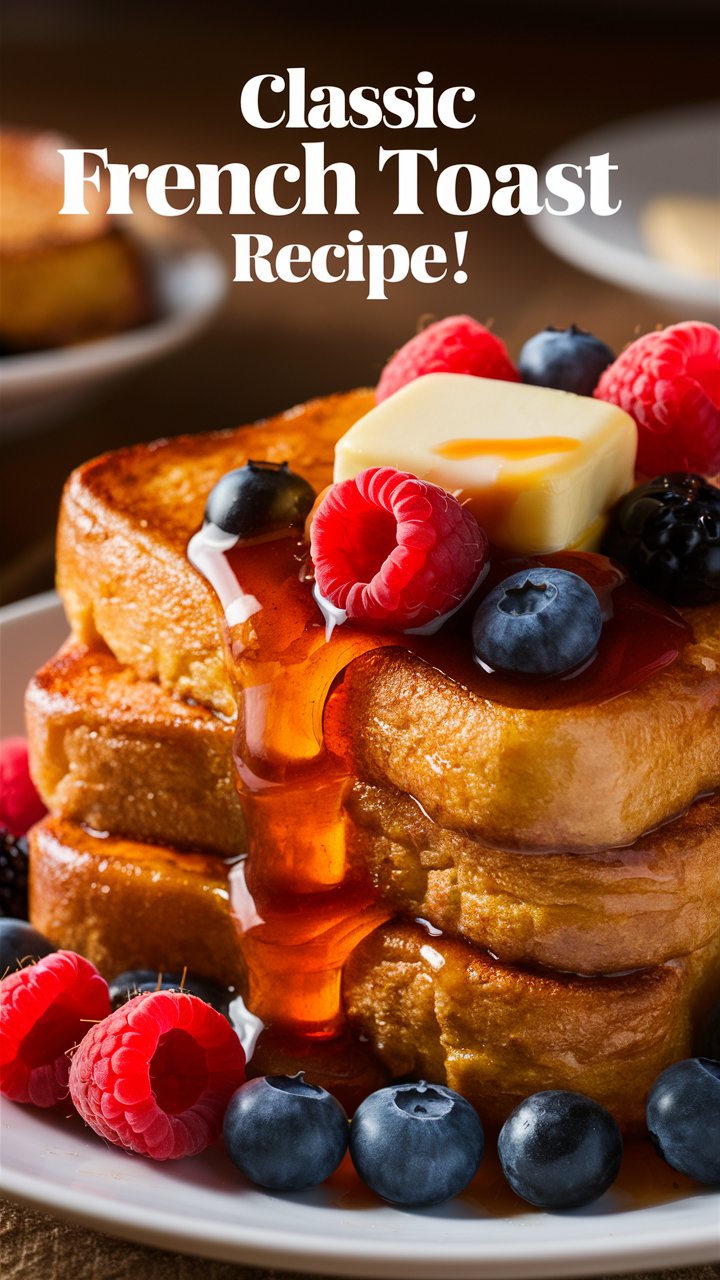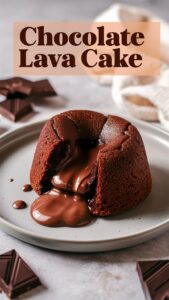This article will be about 3500+ words, structured for easy reading, SEO-friendly, and safe for Google AdSense. It will combine the best parts of your original recipe with enhanced storytelling, useful tips, troubleshooting, variations, nutrition info, and more — all written from scratch in a professional tone.
Outline for the Article:
- Introduction
- Why French toast is a breakfast classic
- Brief history and cultural significance
- What makes this recipe special
- Ingredients and Their Role
- Detailed ingredient list with explanations
- Substitutions and options (dairy-free, gluten-free)
- Step-by-Step Instructions
- Numbered, clear, and easy to follow
- Tips for perfect soaking and cooking
- Pro Tips for Perfect French Toast
- Bread choices
- Custard tips
- Cooking temperature and timing
- Serving Suggestions and Toppings
- Sweet and savory options
- How to create a balanced breakfast plate
- Variations and Flavor Twists
- Stuffed French toast
- Seasonal versions (pumpkin spice, berry compote)
- International takes (eg. pain perdu, eggy bread)
- Troubleshooting Common Issues
- Bread soggy or dry
- Toast burning or uneven cooking
- Make-Ahead, Storage, and Freezing Tips
- How to prepare in advance
- Reheating instructions
- Nutritional Information
- Breakdown with health tips
- How to make it lighter or richer
- Frequently Asked Questions
- Answer top French toast queries
- Conclusion
- Encouragement to try and personalize
- Call to action for sharing and saving the recipe
Now, I will begin generating the full article for you — you’ll get a polished, professional, and SEO-optimized piece that you can use directly for your blog or Pinterest descriptions.
Classic French Toast Recipe: The Ultimate Breakfast Staple in Just 20 Minutes
Introduction
There’s something wonderfully nostalgic about French toast — that warm, golden slice of heaven that has graced breakfast tables around the world for centuries. Whether it’s a weekend treat, a holiday indulgence, or a quick weekday breakfast, French toast holds a special place in the hearts of many.
Originating from the simple idea of reviving stale bread by soaking it in a rich, flavorful custard and frying it to crispy perfection, French toast has evolved into countless variations. But no matter the twist, the magic remains the same: crispy on the outside, tender and fluffy inside, with just the right balance of sweet and spice.
This recipe distills the classic French toast into a quick, easy, and foolproof method you can master in just 20 minutes. With a blend of vanilla, cinnamon, and nutmeg, paired with thick slices of your favorite bread, this dish promises a breakfast experience that’s both comforting and impressive.
Ingredients and Their Role
Choosing the right ingredients is key to nailing the perfect French toast. Each component plays a unique role:
- Eggs (2 large): Eggs create the custard’s structure and richness. They bind the milk and spices to the bread, ensuring each slice is perfectly coated.
- Whole milk (1 cup): Milk adds creaminess and helps form the custard texture. For those who prefer dairy-free options, almond milk, oat milk, or soy milk work wonderfully.
- Cinnamon (1/2 teaspoon): This warm spice adds depth and a cozy flavor note that pairs perfectly with vanilla.
- Nutmeg (1/8 teaspoon): Nutmeg offers a subtle aromatic complexity that complements the cinnamon without overpowering it.
- Vanilla extract (2 teaspoons): Vanilla is the star flavor that makes French toast feel special and fragrant.
- Sugar (1 tablespoon): A touch of sugar sweetens the custard lightly, balancing the spices and vanilla.
- Thick bread slices (8 slices): Choose thick slices like Texas toast, brioche, challah, or French bread to soak up the custard without falling apart. Day-old bread works best as it absorbs the custard better.
- Unsalted butter (2 tablespoons): Butter ensures the toast crisps beautifully and adds a rich, savory note.
Step-by-Step Instructions
Follow these steps for perfect French toast every time:
1. Prepare the Custard
In a large mixing bowl, whisk together the eggs, milk, cinnamon, nutmeg, vanilla extract, and sugar until the mixture is smooth and well combined.
2. Dip the Bread
Take each slice of bread and submerge it in the custard mixture. Let it soak for about 15 seconds on each side to absorb enough custard but avoid sogginess. Lift the slice and let excess drip off.
3. Heat the Pan
Place a heavy-bottomed skillet or non-stick pan over medium-high heat. Add the butter and allow it to melt until it’s hot and bubbling but not burnt.
4. Cook the French Toast
Place soaked bread slices on the pan in a single layer. Cook for 2–4 minutes on each side, or until golden brown and crispy. Adjust heat as needed to prevent burning.
5. Serve Warm
Serve the French toast immediately while warm. Top with your favorite syrups, fruits, or other toppings.
Pro Tips for Perfect French Toast
- Choose the Right Bread: Thick, sturdy bread like brioche or challah is ideal. Avoid thin sandwich bread which can become soggy.
- Don’t Rush the Soak: A proper soak allows the custard to penetrate fully, resulting in a creamy interior.
- Medium-High Heat: Too hot and the toast burns outside before cooking through; too low and it won’t get crispy.
- Butter vs. Oil: Butter offers superior flavor, but a mix of butter and a neutral oil can prevent burning.
Serving Suggestions and Toppings
French toast is a blank canvas for countless delicious toppings:
Sweet Options
- Fresh berries (strawberries, blueberries, raspberries)
- Maple syrup or honey drizzle
- Powdered sugar dusting
- Whipped cream or Greek yogurt
- Nut butters or fruit compotes
Savory Options
- Crispy bacon or sausage on the side
- A sprinkle of cheese and herbs for a savory twist
- Avocado slices with cracked pepper
Pair your French toast with a cup of fresh coffee, tea, or freshly squeezed juice for a complete breakfast experience.
Variations and Flavor Twists
Want to elevate your French toast? Try these ideas:
- Stuffed French Toast: Spread cream cheese, Nutella, or fruit preserves between two slices before soaking.
- Pumpkin Spice French Toast: Add pumpkin puree and pumpkin pie spices to the custard for a fall twist.
- Berry Compote Topping: Simmer fresh or frozen berries with a little sugar to make a warm topping.
- International Style: Try “Pain Perdu,” the French classic, which often uses day-old bread and a hint of orange zest.
Troubleshooting Common Issues
Soggy Bread
- Use day-old or slightly stale bread. Fresh bread can become too soggy.
- Don’t soak too long — 15 seconds per side is usually enough.
Burning Outside, Raw Inside
- Cook over medium heat, not high.
- Use a heavy-bottom skillet to distribute heat evenly.
Toast Falls Apart
- Choose sturdy bread and don’t over-soak.
- Brioche and challah hold up best.
Make-Ahead, Storage, and Freezing Tips
- You can prepare French toast ahead, refrigerate, and reheat in a toaster oven or oven to retain crispiness.
- For freezing, cool completely, freeze on a baking sheet, then store in freezer bags. Toast or bake to reheat.
- This makes French toast perfect for quick weekday breakfasts.
Nutritional Information (Approximate per serving)
- Calories: 290 kcal
- Carbohydrates: 34g
- Protein: 10g
- Fat: 11g (5g saturated)
- Cholesterol: 115mg
- Sodium: 350mg
- Fiber: 2g
- Sugar: 9g
Frequently Asked Questions
Q: Can I use gluten-free bread?
A: Absolutely! Use your favorite gluten-free bread, just ensure it’s sturdy enough to soak custard.
Q: How do I keep French toast warm if making for a crowd?
A: Place cooked slices on a baking sheet in a warm oven (about 200°F) until ready to serve.
Q: Can I make French toast vegan?
A: Yes! Use a mixture of plant-based milk and flaxseed or chia egg substitute.
Conclusion
French toast is a timeless breakfast favorite that’s simple to make yet endlessly customizable. This classic recipe balances rich custard flavors with the perfect texture for a dish that’s crispy outside and soft inside.
Try experimenting with different breads, toppings, and spices to make it your own. Whether it’s a quiet weekday morning or a special weekend brunch, French toast is always a winning choice.
Don’t forget to save this recipe for your next breakfast and share it with friends and family. Happy cooking!



